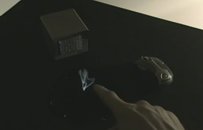
Sony Electronics' Spatial Reality Display Now Supercharged with NVIDIA Omniverse
Sony Electronics is setting a new benchmark for immersive 3D experiences with its cutting-edge ELF-SR2 (27-inch) and ELF-SR1 (15.6-inch) Spatial Reality Displays and the NVIDIA Omniverse development platform. The combination of Sony's unmatched 3D display technology and Omniverse's powerful real-time 3D design and simulation capabilities is poised to revolutionize industries from gaming and entertainment to architecture, engineering, and automotive design—without the need for VR headsets or special glasses.
With Sony's Spatial Reality Display and the new NVIDIA Omniverse, creators can now experience real-time rendering like never before. NVIDIA Omniverse is a platform of application programming interfaces, software development kits, and services that enable developers to seamlessly combine Universal Scene Description (OpenUSD) and NVIDIA RTX rendering technologies into existing software tools. By connecting OpenUSD-based applications developed on NVIDIA Omniverse with Sony's Spatial Reality Display, creators can instantly view and manipulate their 3D assets in real time. This allows creators to turn their digital designs into holographic-like experiences, giving them the freedom to explore all aspects of their work from every angle, no extra hardware required.
With Sony's Spatial Reality Display and the new NVIDIA Omniverse, creators can now experience real-time rendering like never before. NVIDIA Omniverse is a platform of application programming interfaces, software development kits, and services that enable developers to seamlessly combine Universal Scene Description (OpenUSD) and NVIDIA RTX rendering technologies into existing software tools. By connecting OpenUSD-based applications developed on NVIDIA Omniverse with Sony's Spatial Reality Display, creators can instantly view and manipulate their 3D assets in real time. This allows creators to turn their digital designs into holographic-like experiences, giving them the freedom to explore all aspects of their work from every angle, no extra hardware required.







